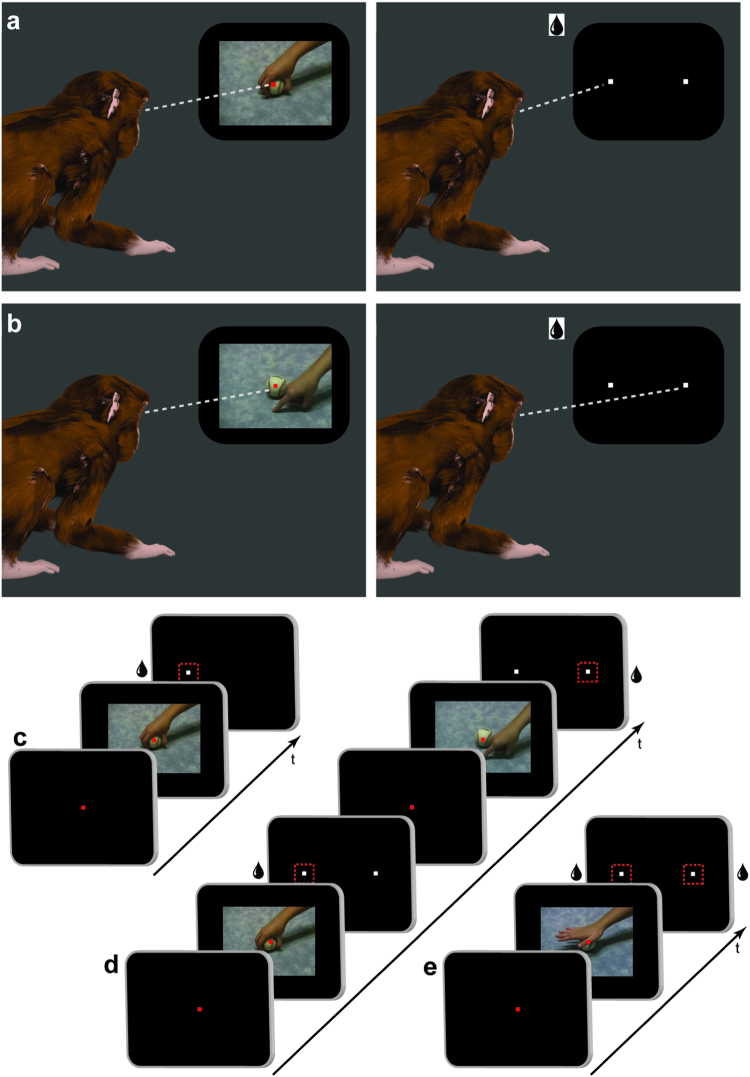Figure 1.
Two-alternative categorization task training and generalization testing procedure. Monkeys were required to fixate a video on a screen positioned in front of them showing either a grasping (a) or a non-grasping (b) manual motor act. After video presentation, the video disappeared and two peripheral targets appeared on the screen. A liquid reward was given if monkeys made a saccade to the correct target (left for grasping, right for non-grasping motor acts). Monkey renderings in (a) and (b) were made using open-source software Blender (https://www.blender.org/). (c) In the first training sessions, during a proportion of categorization trials (up to 30%) only the correct target was shown after video presentation (for illustration only a grasping trial is shown). A saccade to this target would be rewarded. The remainder of the trials consisted of two targets as shown in (d). The red dashed squares around the targets in A,B and C were not physically shown and are for illustration purpose only to indicate a saccade to that target would result in a reward. (d) During later training sessions, after video presentation, two targets were shown simultaneously and a reward was given for a saccade to the correct target. (e) During generalization testing, after video presentation, two targets would appear and selection of either target would be rewarded in order to avoid the monkey learning the novel stimuli.

